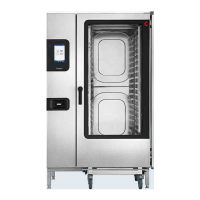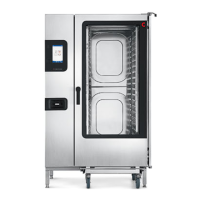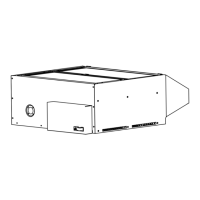Safety hazard: heat
Risk / hazard Where and in which situations will
the risk/hazard exist?
What to do
Risk of burns posed by
hot surfaces
On the outside of the appliance door Before performing any cleaning
work, wait until the cooking
compartment has cooled down to
a temperature lower than 140 °F
or cool it down using the
“Cool down” function
Wear the required personal
protective equipment, especially
protective gloves
Inside the entire cooking
compartment. This includes all parts
that are or have been inside the
compartment during cooking, such
as:
Racks
Suction panel
Core temperature probe
Bakeware, sheet pans, shelf
grills, etc.
Loading trolley
On the inside of the appliance door
On top of electrical appliances:
Exhaust vents
Ventilation port
On top of gas appliances:
Exhaust vents
Exhaust outlet
Ventilation port
Risk of scalding posed
by hot steam whenever
water is sprayed into
the hot cooking
compartment
Inside the entire cooking
compartment
Before starting to clean the unit,
wait until the cooking
compartment has cooled down to
a temperature lower than 140 °F
or cool it down using the
“Cool
down” function
Wear the required personal
protective equipment, especially
protective gloves
Risk of scalding posed
by hot steam
In front of the appliance when the
cooking compartment is cooled
down with the “Cool down” function
Step away from the appliance, as
hot steam will come out through
the open appliance door
Do not put your head inside the
cooking compartment
Risk of scalding posed
by water being sprayed
Whenever bakeware containing
liquid fat is inside the cooking
compartment and water is sprayed
into it
Do not spray water into liquid fat
Safety hazard: electricity
Risk / hazard Where and in which situations will
the risk/hazard exist?
What to do
Risk of electric shock
due to short circuit
If the appliance comes into contact
with water
Do not hose down the outer case
Always keep the USB port closed
during cleaning
3 For Your Safety
Operating Manual 36

